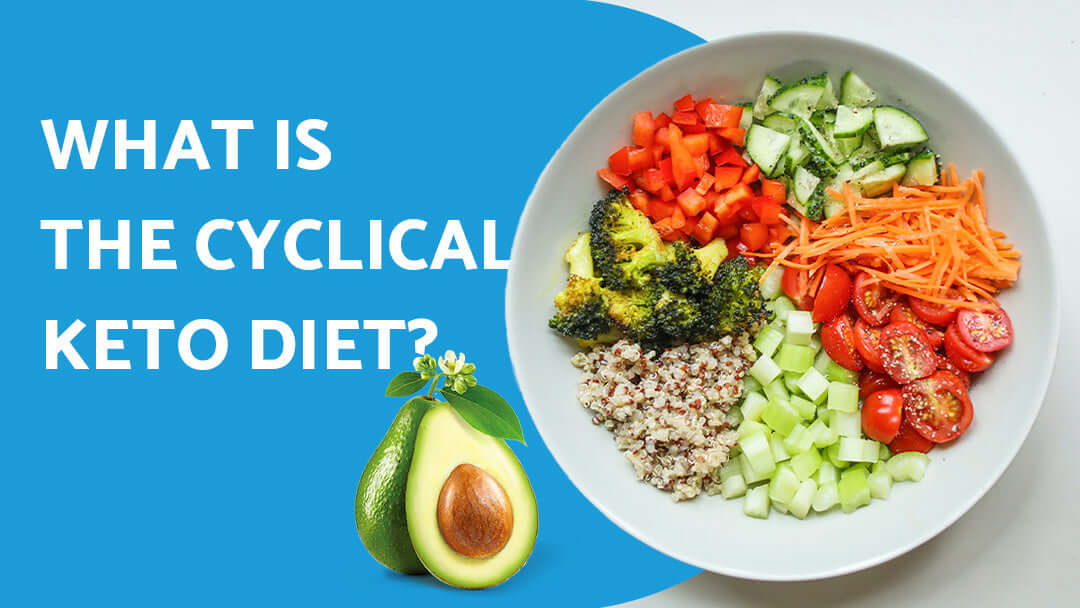In the ever-evolving landscape of diet trends, the ketogenic diet has gained significant popularity for its effectiveness in weight loss and numerous health benefits. However, many individuals find it challenging to adhere to the strict guidelines of traditional keto diets for the long term. This is where the cyclical keto diet emerges as a promising solution, offering a more sustainable approach to achieving health and fitness goals while maintaining dietary compliance.
What is the Cyclical Keto Diet?
The cyclical keto diet, also known as CKD, involves alternating periods of strict ketogenic eating with short-term periods of higher carbohydrate intake. Unlike standard keto diets, which typically require strict adherence to low-carb consumption, CKD allows for strategic carb refeeds, usually once a week or every few days, to replenish glycogen stores and provide metabolic flexibility without interrupting ketosis.
How Does it Work?
The primary principle behind the cyclical keto diet is to harness the benefits of nutritional ketosis while mitigating some of the challenges associated with long-term adherence to strict low-carb eating. By cycling in and out of ketosis, individuals can enjoy the metabolic advantages of ketosis for fat burning and mental clarity while still incorporating carbohydrates strategically to support physical performance and overall well-being.
Benefits of Cyclical Keto Diet:
- Improved Long-Term Compliance: One of the most significant advantages of CKD is its enhanced sustainability compared to continuous keto diets. By incorporating periodic carb refeeds, individuals can enjoy the psychological relief of temporary dietary flexibility, making it easier to adhere to the diet in the long term.
- Enhanced Physical Performance: Carbohydrates are the body's preferred source of energy for high-intensity exercise. By strategically timing carb intake around workouts, individuals following CKD can optimize their athletic performance and recovery without sacrificing the metabolic benefits of ketosis.
- Hormonal Balance: Prolonged adherence to strict low-carb diets can sometimes lead to hormonal imbalances, particularly in thyroid and adrenal function. Cyclical carb refeeds help prevent these issues by signaling to the body that it's not in a state of prolonged deprivation, thus supporting healthy hormone levels.
- Psychological Well-being: The cyclical nature of CKD allows for periodic indulgence in carb-rich foods, which can boost mood and satisfaction, making the diet more enjoyable and sustainable in the long run.
Implementing the Cyclical Keto Diet:
Before embarking on a cyclical keto diet, it's essential to consult with a healthcare professional or qualified nutritionist, especially if you have underlying health conditions or concerns. Here are some general guidelines for implementing CKD:
- Determine Your Carb Refeed Schedule: Depending on your goals and activity level, plan to incorporate carb refeeds once a week or every few days. This typically involves consuming a higher amount of carbohydrates (e.g., 150-200 grams) in the form of whole, nutrient-dense foods.
- Monitor Ketosis: Use precise monitoring methods like the continuous ketone monitor to gain real-time visibility into your ketone levels throughout each cyclical phase. SiBio CKM's 24h x 14d wearable biosensor transmits continuous, discreet measurements via Bluetooth to the SiBio APP every 5 minutes, allowing you to closely track your transition in and out of ketosis.
- Focus on Quality Carbohydrates: Opt for complex carbohydrates from sources such as fruits, vegetables, legumes, and whole grains during carb refeeds to minimize blood sugar spikes and support overall health.
- Adjust According to Individual Response: Every person's metabolic response to CKD may vary, so it's essential to pay attention to how your body reacts and adjust your carb intake and timing accordingly to optimize results.
Conclusion:
The cyclical keto diet offers a practical and sustainable approach to reaping the benefits of nutritional ketosis while addressing some of the challenges associated with strict low-carb diets. By strategically incorporating carb refeeds, individuals can enjoy improved long-term compliance, enhanced physical performance, hormonal balance, and greater psychological well-being. With the right strategy and mindset, the cyclical keto diet can be a valuable tool for achieving lasting health and fitness goals.
FAQs:
Q: When should I start cyclical Keto?
A: We recommend doing a standard ketogenic diet for a full month before attempting cyclical keto. This helps maintain keto benefits and prevents true adaptation loss between higher carb phases.
Q: How many carbs on cyclical keto?
A: The number of carbs consumed during cyclical keto can vary depending on factors such as activity level, metabolic rate, and individual tolerance. Typically, during the carb-loading phase of cyclical keto, individuals may consume a higher amount of carbohydrates, often ranging from 50 to 150 grams per day or more. However, it's crucial to experiment and find the carbohydrate intake that works best for you while still allowing you to maintain a state of ketosis during the low-carb phases.
Q: What is the difference between keto and cyclical keto diet?
A: Keto is a consistently low-carb diet that aims to maintain a state of ketosis, where the body primarily burns fat for fuel. In contrast, cyclical keto involves cycling between periods of low-carb intake, similar to keto, and intermittent higher-carb days. This cycling allows for glycogen replenishment, supports intense physical activity, and may offer performance benefits while still maintaining ketosis during low-carb phases.










